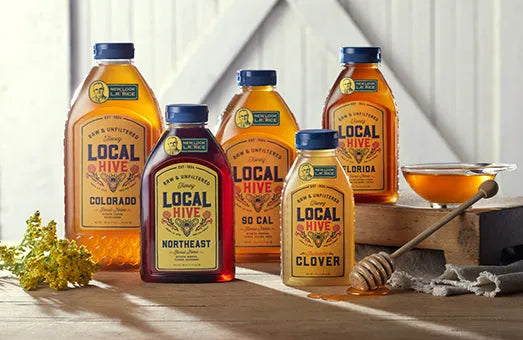Local Hive Highlight: Northwest
Honey Facts
Alfalfa grows all across the US, and the Pacific Northwest is no exception. Bees seek it out everywhere they go for its bright purple flowers and consistent pollen supply. We’ve written about it before, since it appears in most every honey varietal we produce.
Aster
Aster honey can come from dozens of different wildflowers scattered across the country, a range so wide that most aren’t even considered aster anymore. Though its honey is sweet and delicious, aster pollen can be extremely pungent. Beekeepers place the scent somewhere between “gym bag” and “musty beer.” Yikes. Nonetheless, the bees masterfully balance aster with the other pollens in our Northwest local honey.
Basswood
Basswood, also known as linden, is a large tree native to eastern North America that’s made its way all the way across the northern US and into California. For over 100 years, basswood has been well known among beekeepers as a tree that attracts bees in droves; they simply can’t resist its massive output of sweet sap. However, for all their popularity with bees, basswood trees are sensitive to weather, so their honey output is erratic at best. But basswood honey is worth all the trouble, with subtle flavors like banana, butterscotch and kiwi that strike the palate quickly, giving our Northwest varietal its bold kick.
Clover
Clover is a neutral pollen found nationwide that produces mellow, sweet honeys. It’s a key part of every single one of our varietals from the Northwest clear to Florida. You can read more about clover honey in our Montana blog post.
Goldenrod
Goldenrod is a beekeeper’s dream: a perennial that provides a consistently large honey harvest in the winter, when clover, alfalfa and trees aren’t producing pollen. It doesn’t hurt that goldenrod’s 100+ species can be found throughout the US, Canada and even parts of Mexico.
When goldenrod is in bloom, bees swarm to the flowers and fight off praying mantises, beetles and butterflies for their share of its plentiful pollen and nectar. Though it sports bright yellow flowers, goldenrod’s honey is as dark as it gets, giving our Northwest varietal its deep, opaque color and lasting sweetness.

